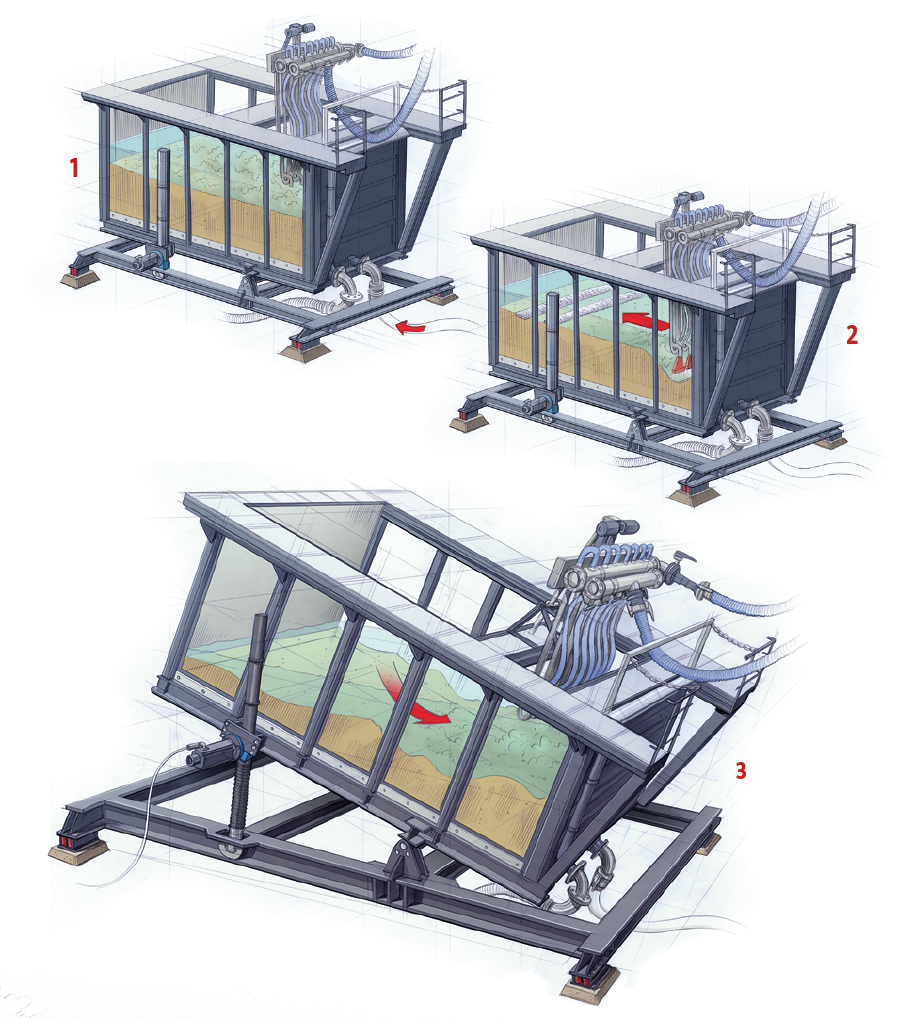Static Liquefaction Tank
A huge tank filled with water and sand has been placed on the ground floor of the
Faculty of Civil Engineering and Geosciences. It will test solutions for problems with
the seabed of the Eastern Scheldt Storm Surge barrier.
When you put a stone on a sand layer in a stream, water will flow around it with such power that a gap will form in the sand layer downstream of the stone. This is called a scour hole. This same
phenomenon could be happening close to the pillars of the Eastern Scheldt storm surge barrier. To prevent this, a layer of protective stones was laid on the seabed to keep the sand in place. Unfortunately, scour holes began to grow behind the protective layer, some at a depth of 30 metres. The deeper the hole, the bigger the chance that it will collapse and that the protective stone layer might be affected.
What to do? Professor Amin Askarinejad (Geo-Engineering, experimental soil mechanics) and his team are researching just that question. For testing, they needed a tank with water and sand. The bigger the scale of the tests, the better the test results. This is why they are using a tank of five metres long, two metres wide and two metres high. The tank is fully equipped with sensors, pumps and even 3D printed dredging heads.
Before testing, the sand is loosened by pushing water from below to simulate the formation of the seabed by settlement of the sand (1). The tank can be tilted to up to 10 degrees, but by dredging the sand and making a slope in the tank, the simulated scour holes can be steeper (2). In the end, the tank is tilted to simulate the steepening process of the walls of the scour holes. At a certain angle, the slope fails, triggering a fast landslide (3). The tank can also be used to study the triggering mechanisms of tsunamis caused by submarine slope failures(4) or novel anchoring systems for floating wind turbines (5). At present, most wind turbines are fixed to the seabed with piles. With an efficient anchoring system, turbines could be placed further offshore where the sea is deeper and the wind stronger. Askarinejad is planning to research this anchoring system in the future.

